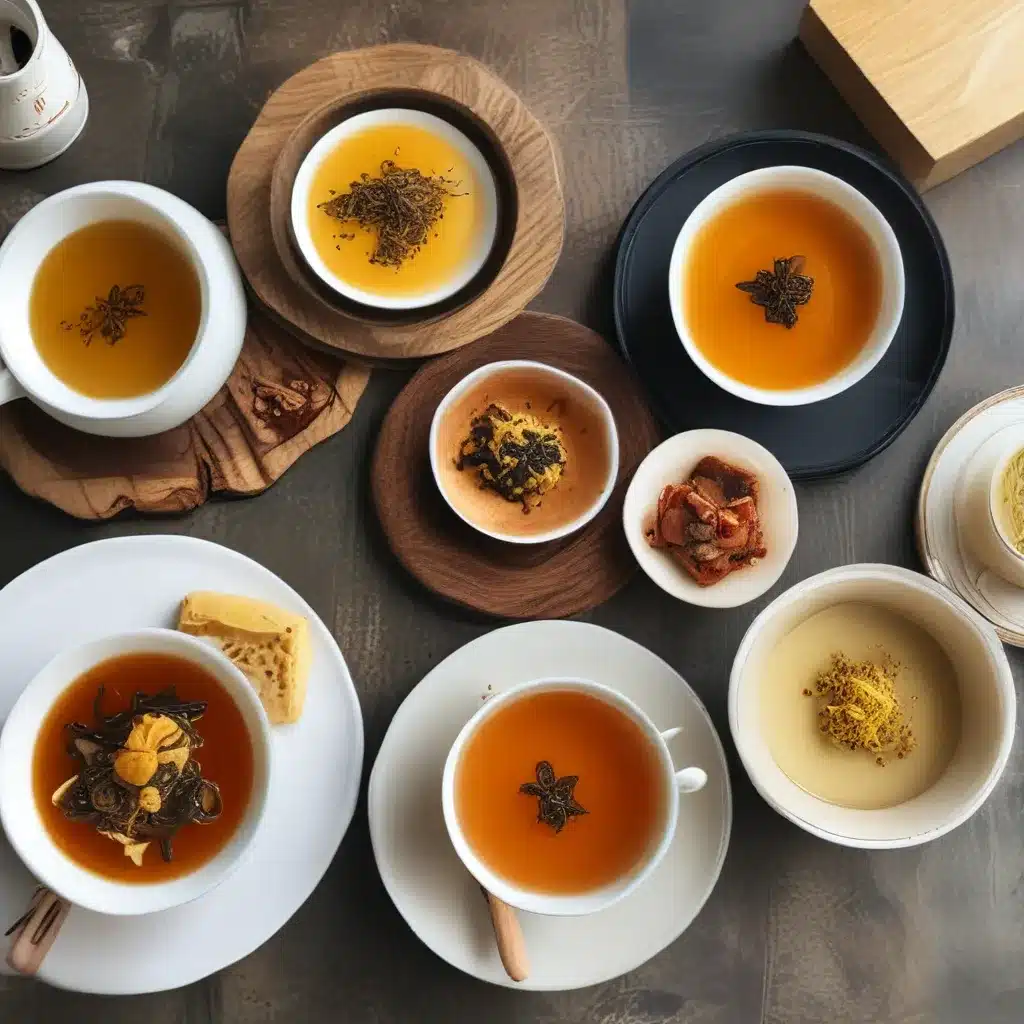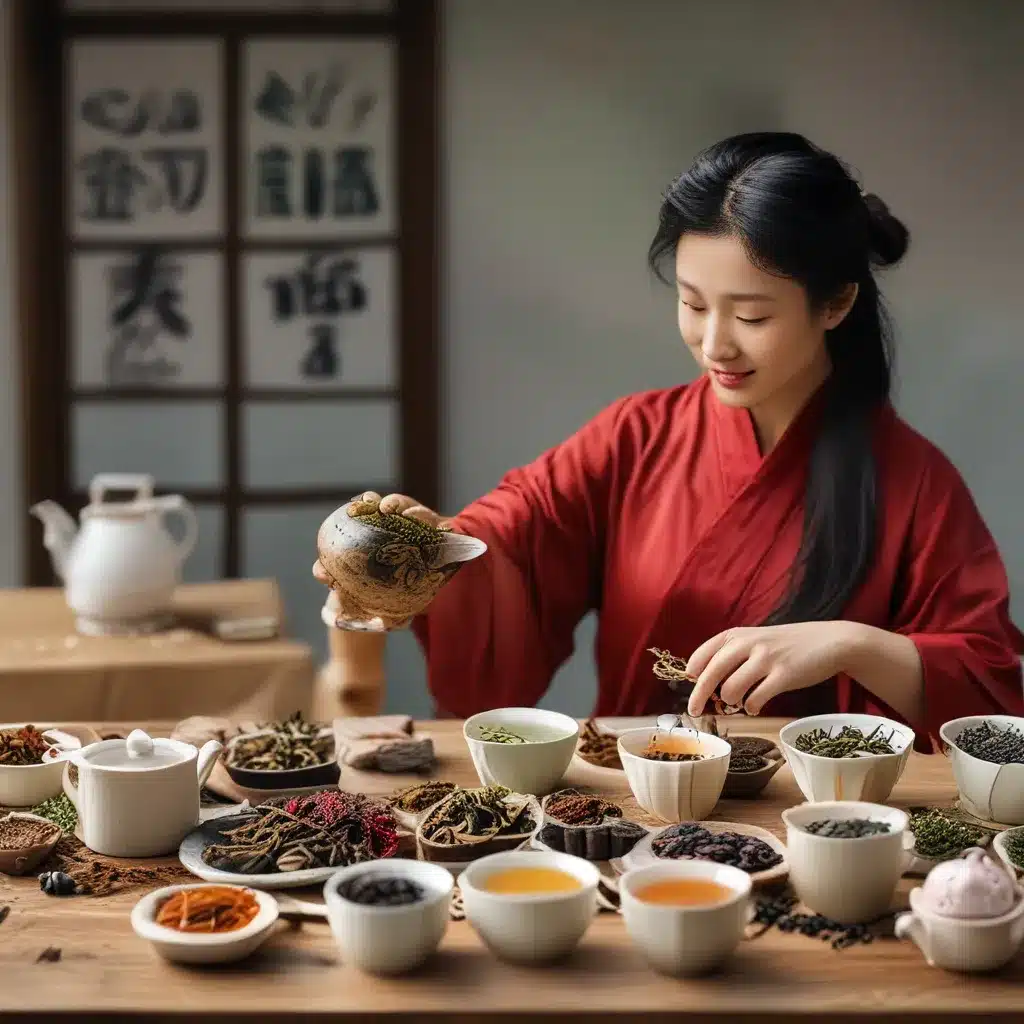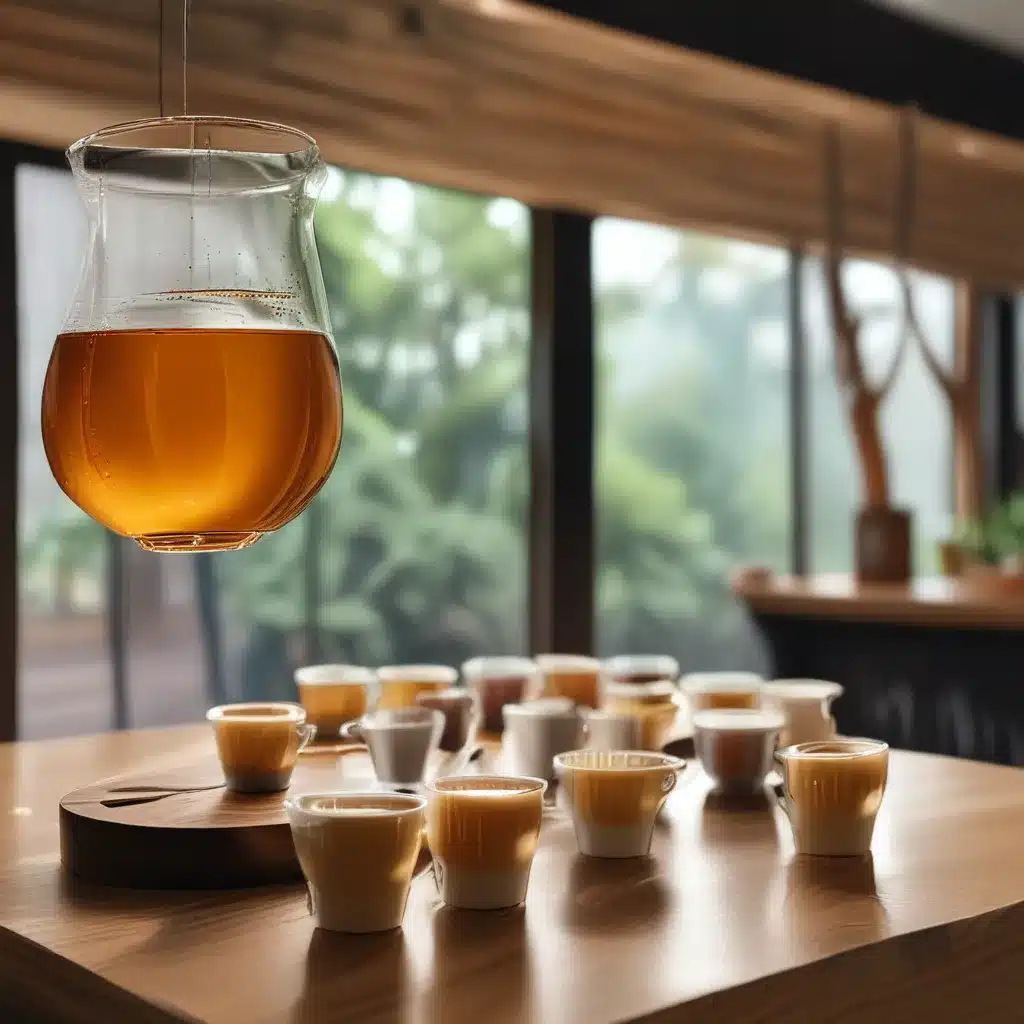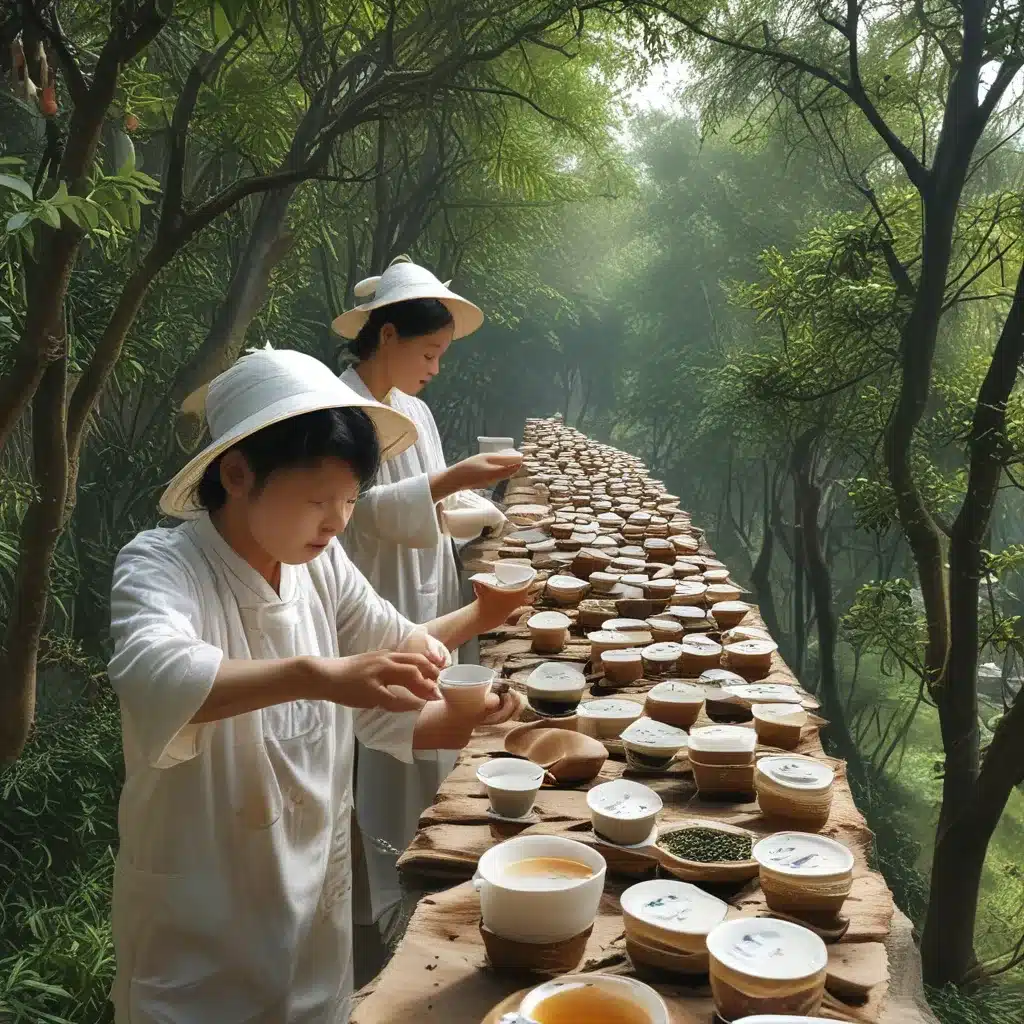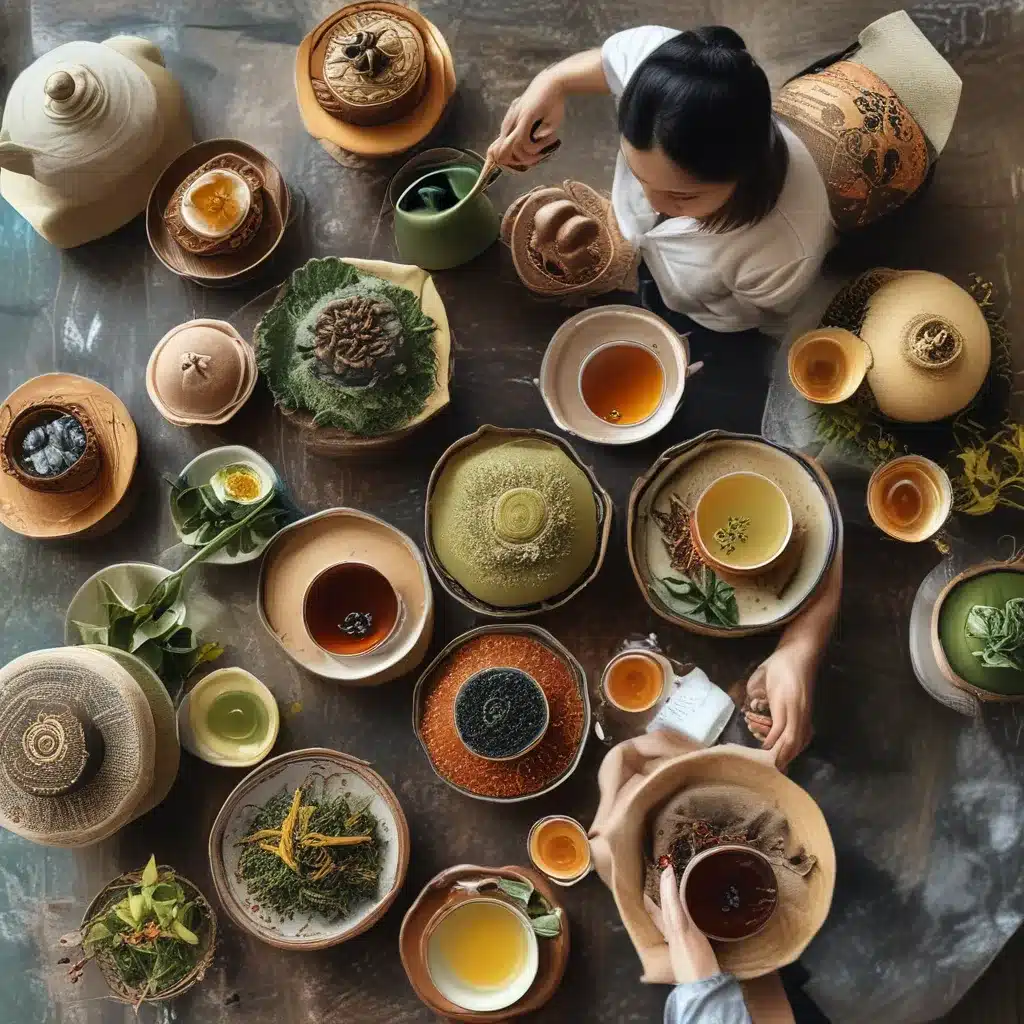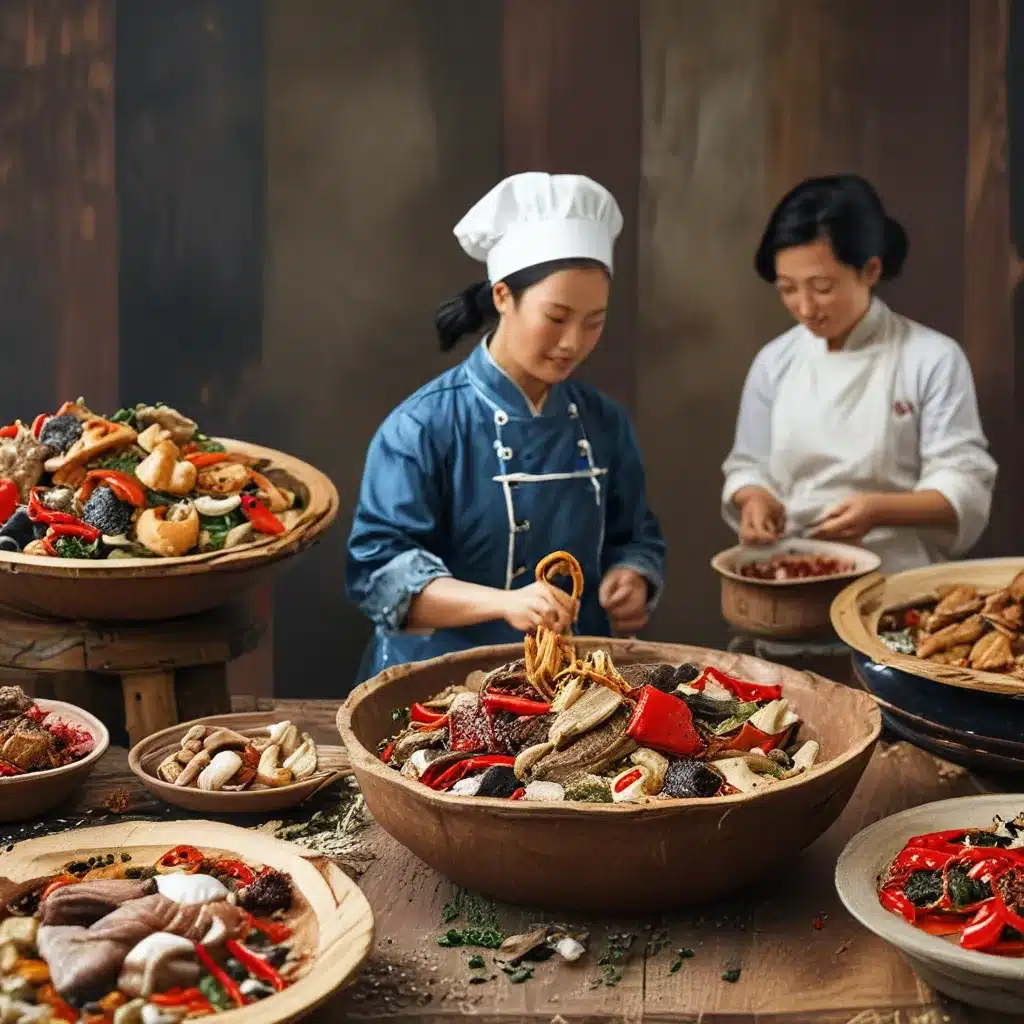
Embracing the Unexpected: Reclaiming Culinary Scraps
As the head chef at One Dragon Restaurant, I’ve always been fascinated by the rich tapestry of Chinese cuisine and its deep-rooted traditions. But like many chefs, I’ve also grappled with the challenge of managing food waste – a pressing issue that has only grown more urgent in recent years. That is, until I stumbled upon a revelatory approach that has forever transformed the way I think about culinary scraps.
It all started with a humble carrot peel. I remember standing in the kitchen, holding the vibrant orange shavings in my hand, and instead of tossing them into the compost bin, I felt a tug of curiosity. What if these discarded bits held untapped potential? A spark ignited, and I embarked on a journey of discovery, exploring the boundless possibilities of upcycling – the process of transforming waste into new, valuable products.
Unearthing the Hidden Gems of Chinese Cuisine
As I delved deeper into the world of upcycling, I was amazed to find that the culinary traditions of China were already brimming with ingenious ways to breathe new life into what many would consider waste. From the centuries-old practice of pickling vegetable scraps to the innovative use of animal bones in hearty broths, the Chinese culinary landscape was a treasure trove of untapped potential.
Take, for instance, the humble lotus root. Often relegated to the sidelines, this unassuming vegetable is a prime example of how Chinese chefs have long embraced the art of upcycling. The tough, fibrous skin is transformed into a crunchy, flavorful garnish, while the starchy center is repurposed into a variety of dishes, from steamed buns to savory fritters. The versatility of the lotus root knows no bounds, and its journey from kitchen scraps to culinary delights is a testament to the ingenuity of Chinese cooking.
Expanding the Boundaries of Chinese Cuisine
But the magic of upcycling in Chinese cuisine doesn’t stop there. As I delved deeper into this realm, I discovered a veritable cornucopia of innovative approaches that are pushing the boundaries of what we traditionally consider waste.
Consider the humble chicken carcass. In the West, it’s often discarded or used solely for stock. But in China, enterprising chefs have elevated this humble byproduct into a culinary showstopper. By meticulously picking the remaining meat from the bones and carefully simmering the carcass, they create a rich, intensely flavorful dish known as “chicken oil rice.” The result is a mouthwatering blend of tender meat, fragrant oil, and a texture that can only be described as pure comfort.
The Wasted Food Scale highlights the importance of upcycling in the hierarchy of food waste management, placing it as one of the most preferred pathways. By transforming food scraps into new, valuable products, we not only reduce the environmental impact of food waste but also honor the rich traditions that have long informed Chinese culinary practices.
Embracing the Future of Chinese Cuisine
As I’ve immersed myself in this world of upcycling, I’ve been inspired by the ingenuity and forward-thinking mindset of a new generation of Chinese chefs. They’re taking these time-honored techniques and pushing them to new heights, blending traditional wisdom with modern innovation.
One such visionary is Amanda Oenbring, the CEO of the Upcycled Food Association. Her tireless efforts to champion the upcycling movement have been a true source of inspiration, and her belief in the transformative power of food waste reduction resonates deeply with me.
As Oenbring so eloquently stated, “With phenomenal energy of a new UFA board, a network of innovative businesses leading the way, and expanding awareness of just how crucial addressing food waste is as a solution for the climate crisis, I am committed to being a catalyst in this transformational moment in every step ahead for UFA with courage, compassion, and curiosity.”
Reimagining the Future of Chinese Cuisine
It’s this spirit of innovation, coupled with a deep respect for tradition, that I believe will shape the future of Chinese cuisine. By embracing the unexpected and unlocking the hidden potential of culinary scraps, we can not only reduce our environmental impact but also breathe new life into the dishes we love.
Take, for example, the humble broccoli stem. Often discarded in favor of the more visually appealing florets, these fibrous stalks have become a pet project of mine. By shredding them into a slaw-like texture and tossing them with a tangy, umami-rich dressing, I’ve created a vibrant side dish that rivals the popularity of its floret-centric counterpart.
As Jeremy and Adam Kaye of The Spare Food Co. have highlighted, reducing food waste is not only a practical necessity but also a profound ethical imperative. By championing the cause of upcycling, we’re not only honoring the rich culinary traditions of China but also paving the way for a more sustainable, circular economy.
Unlocking the Potential of Chinese Culinary Waste
As I look to the future, I see a world where the boundaries between waste and culinary treasure are blurred, where every scrap, every peel, and every bone is seen as an opportunity to create something extraordinary. It’s a world where the lessons of the past inform the innovations of the present, where the unexpected and the familiar coexist in perfect harmony.
And at the heart of this transformation, I believe, lies the essence of what makes Chinese cuisine so remarkable – a deep reverence for the land, a respect for every ingredient, and a tireless pursuit of culinary excellence. By embracing the power of upcycling, we’re not only honoring these timeless values but also positioning Chinese cuisine as a global leader in the fight against food waste.
So, the next time you dine at One Dragon Restaurant, I invite you to look beyond the familiar and explore the unexpected. From the crunchy lotus root garnish to the rich, nourishing chicken oil rice, you’ll discover a world of culinary innovation that celebrates the very essence of Chinese cuisine – a harmonious blend of tradition, creativity, and a relentless pursuit of perfection.

